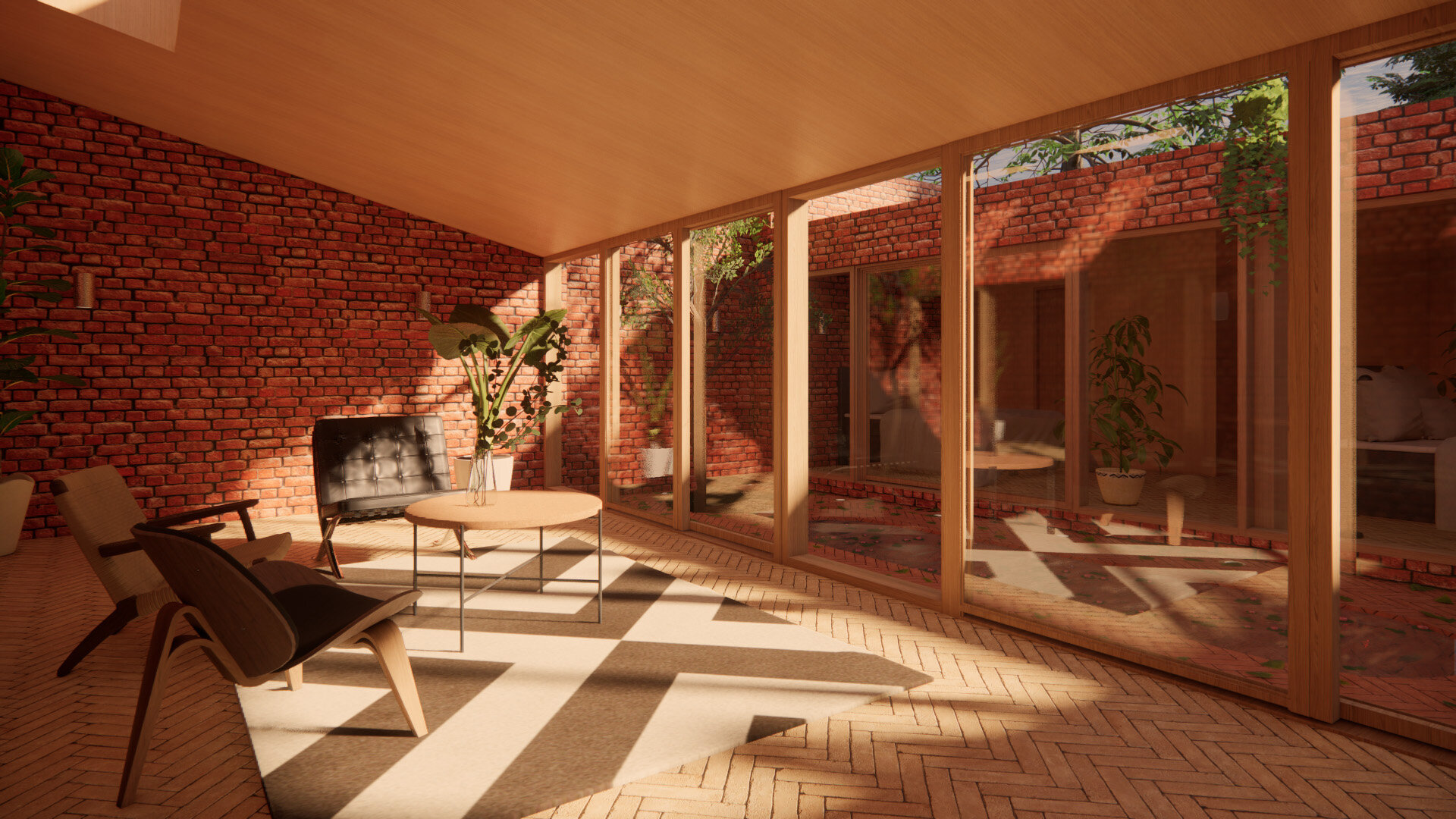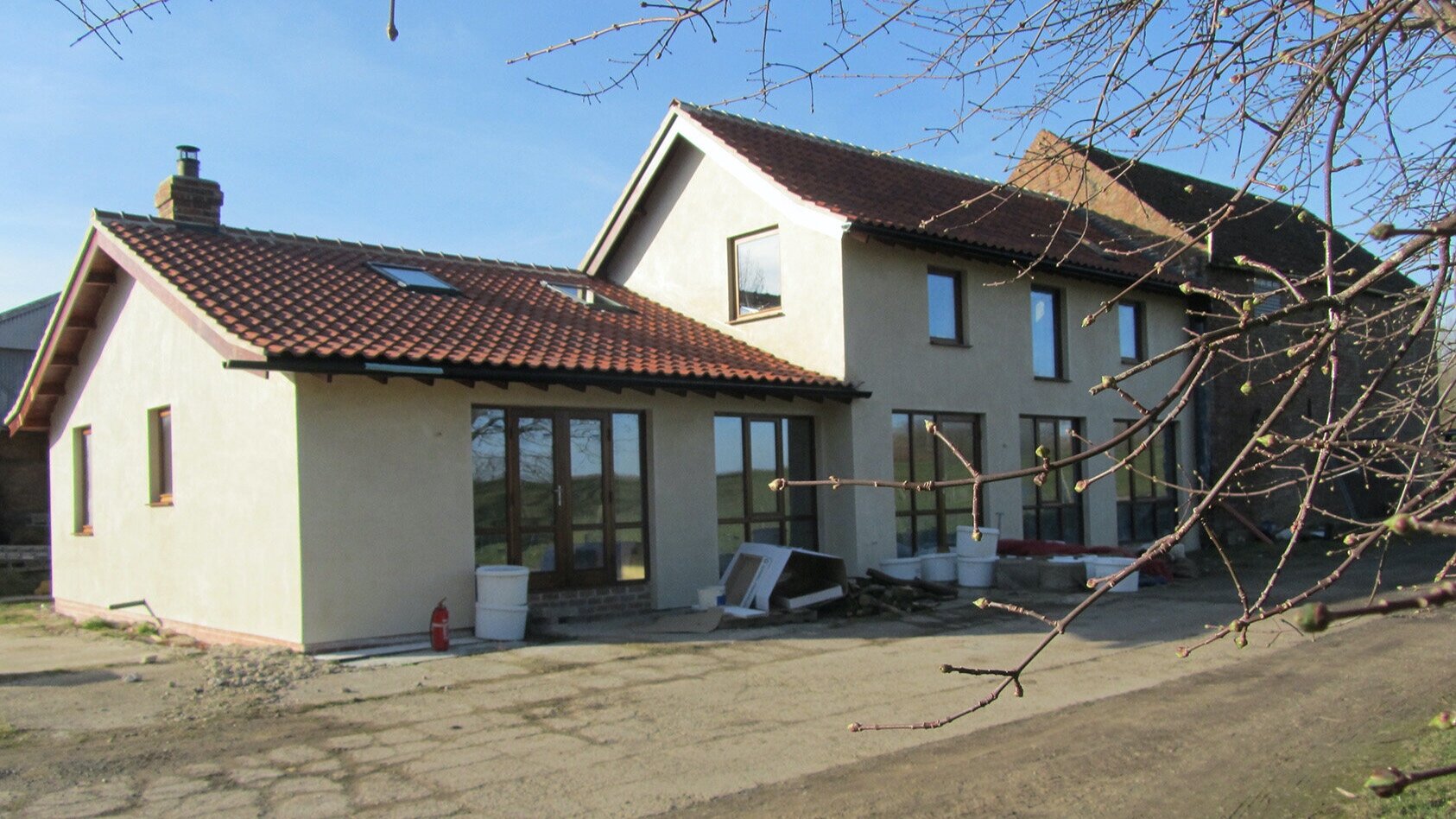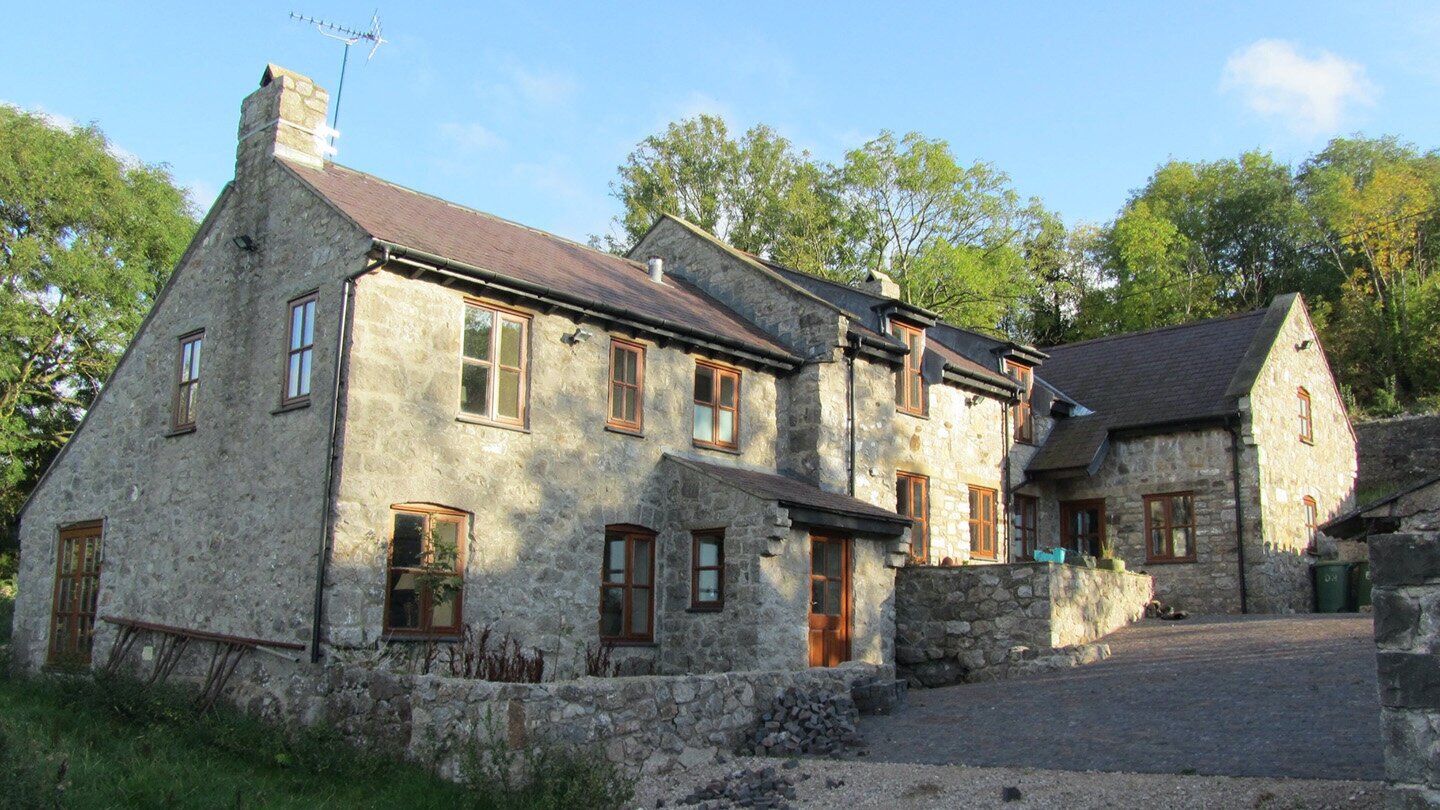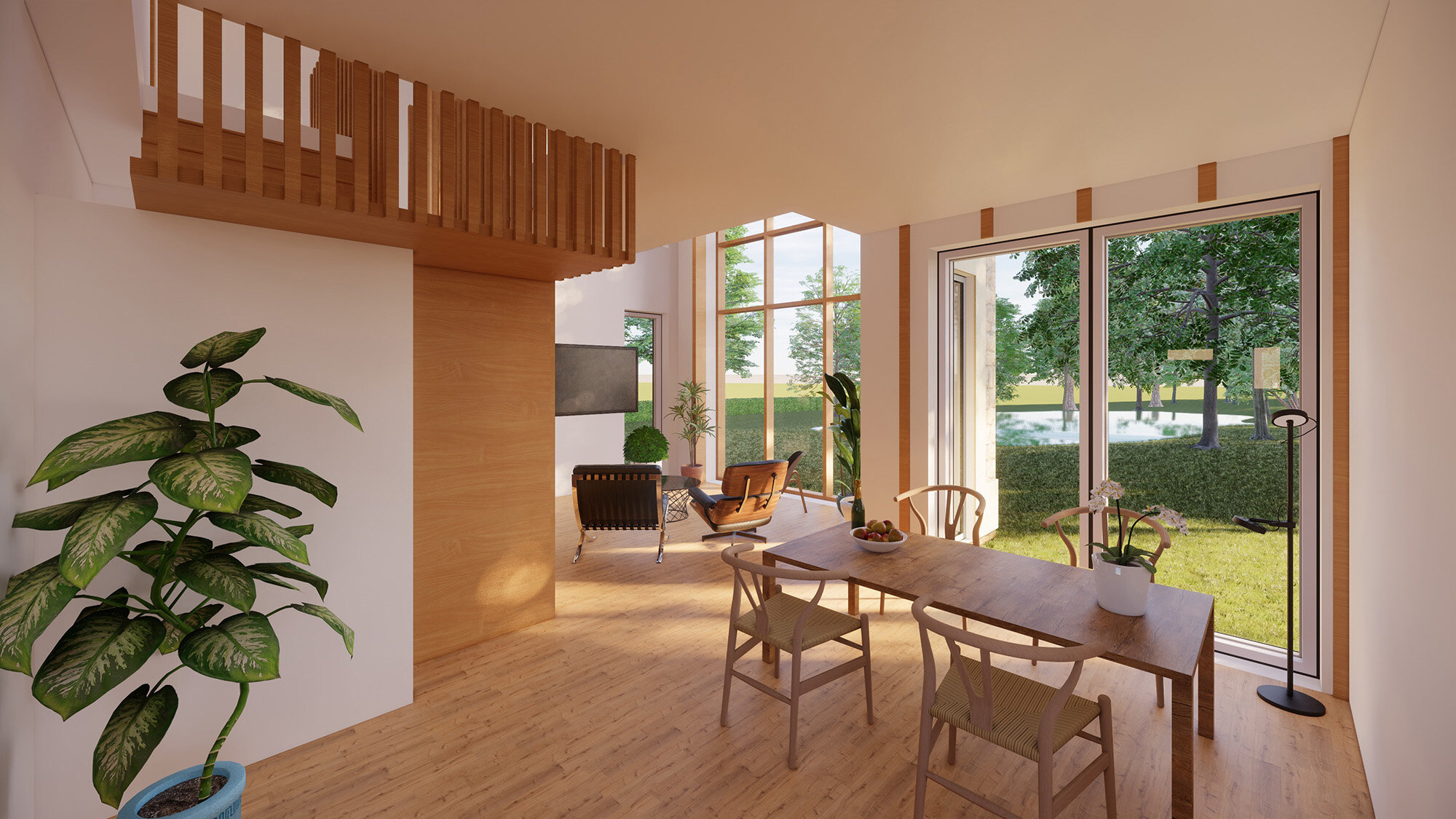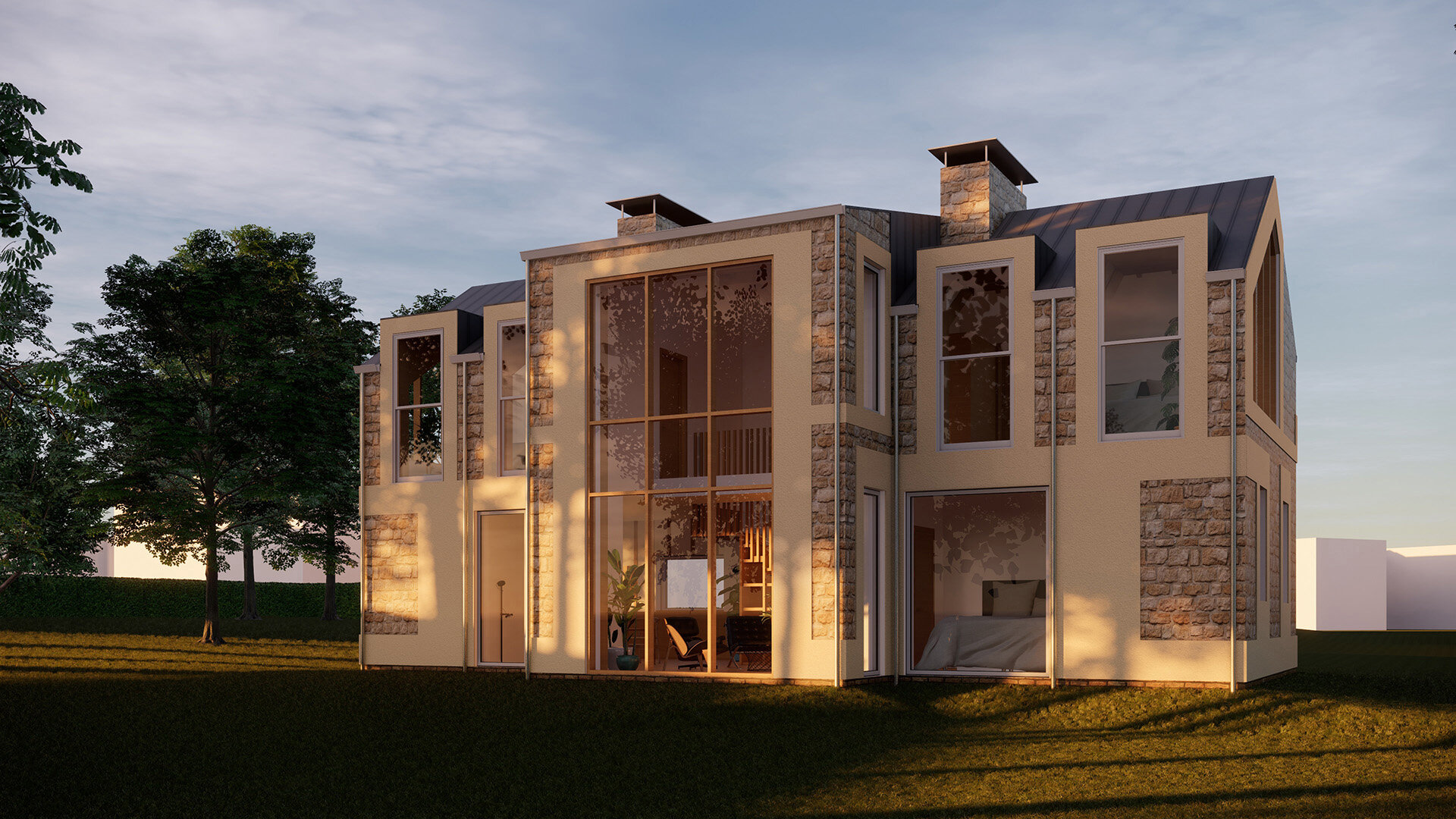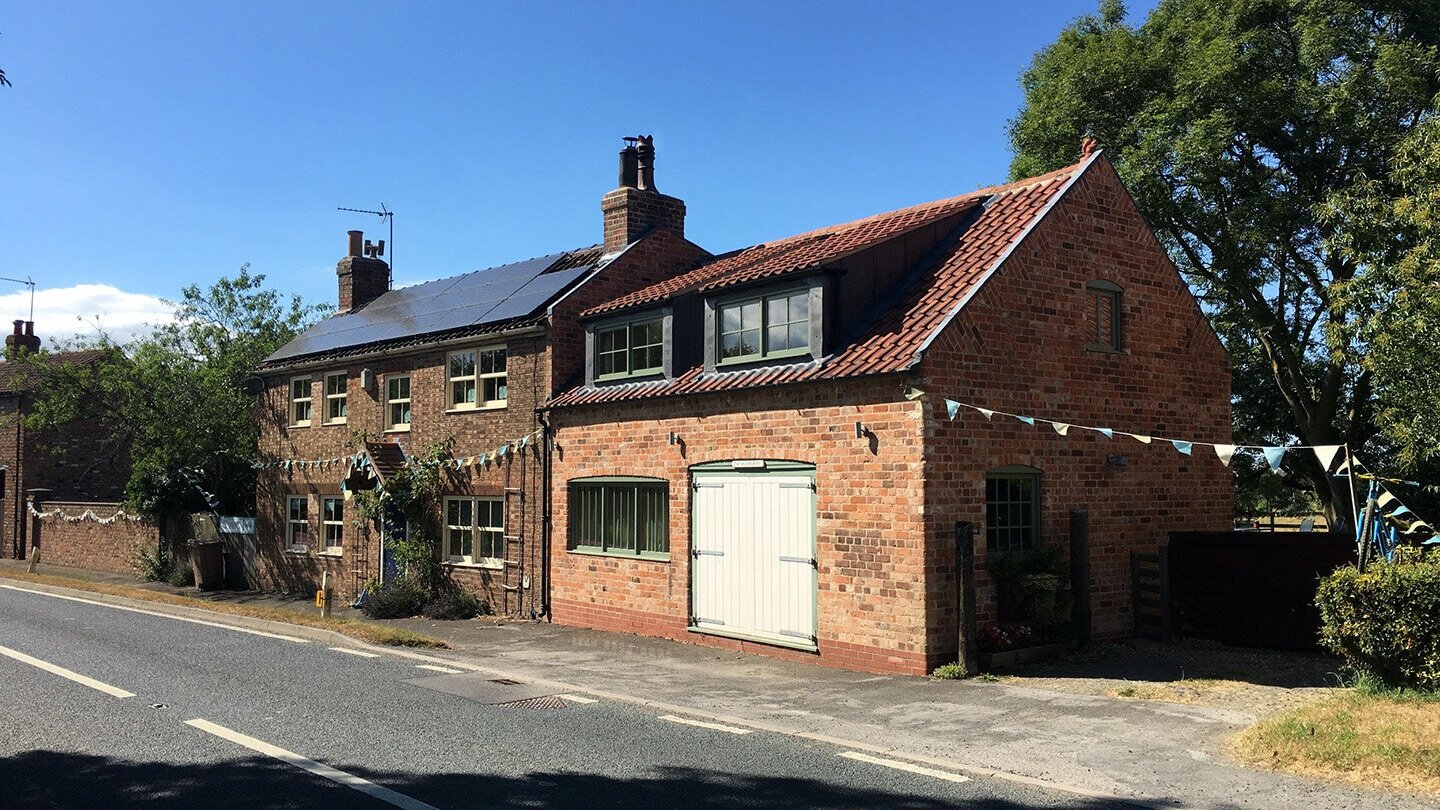Achieving a sustainable home is no simple task, pairing renewable energy systems with a well orientated, efficiently organised and well-insulated home will still not ensure your home is sustainable. How much energy was used in that concrete slab or those blockwork walls? To make a sustainable home you must use sustainable materials.
The construction industry is responsible for ~40% of global emissions. To change this we must radically lower the carbon emitted by our buildings in use (energy) but more importantly, remove the emissions inherent in the act of building and from the materials our homes are made from. A truly sustainable building material must have what is called a low “embodied carbon”.
What is “Embodied Carbon”?
Embodied carbon is the carbon footprint inherent in the sourcing, processing, transportation, packaging, assembly and the associated waste of a material, the lower, the more eco-friendly.
We have used these factors and a number of further considerations of thermal insulation performance, structural capability, carbon capture (sequestration), recyclability, availability and passive properties to assess the construction industry’s materials for structure, insulation, cladding and internal finishes, here are our top 7 sustainable materials for the UK.
7 - Cellulose Insulation
Made from 85% recycled newspaper and 15% fire retardants and recycled fibreglass, this material is highly sustainable negating the waste emissions of throwing away a plentiful resource, being long-lasting and very thermally insulating which lowers the energy loss and carbon footprint of your home. The insulation is sprayed into place allowing it to achieve great levels of airtightness, further lowering your home’s heat loss.
The fluid quality of cellulose makes it ideal for insulating the irregular structure of barns and other historic buildings as we did in North Wales at our Bron Berllan project where a derelict barn’s stone shell was backfilled with newspaper insulation creating a highly sustainable home thermal envelope.
Uk suppliers including Warmcel, Thermofloc & Ecocel all offer good information and further ideas on this sustainable eco-material.
6 - Bamboo
As one of the fastest growing woods used in the construction industry, bamboo is inherently more sustainable than most other timber products. Bamboo can be harvested in 1-5 years where oak would take a minimum of 40 years before being ready to harvest.
Using bamboo over hardwood lowers the demand for unsustainable and damaging deforestation. A great benefit of bamboo is it uses CO2 as fuel to grow, “sequestering” carbon into its cells purifying the world’s atmosphere. Bamboo is the ideal wood to use as flooring over underfloor heating as it does not warp as almost all other wood flooring does, the material is also extremely hardwearing making it a great floor for your home.
The environmental downside to bamboo is that it cannot be grown in the UK climate and will therefore always have an attached carbon footprint from the shipping of the material from warmer areas of the planet. It is vital to source FSC certified bamboo to ensure you are not financing unsustainable timber harvesting.
5 - Sheep’s Wool
You are likely familiar with the thermal benefits of woolly jumpers and those properties make this material perfect for domestic insulation matching the thermal capabilities of cellulose and hemp-based insulation at 0.035 W/mK.
The material is also fully breathable allowing the passage of water vapour through the wall envelope making it ideal for heritage timber and masonry buildings prone to damage from pent up condensation.
As a UK sourced material the associated mileage can be kept lower than many other comparable materials which are produced abroad. Sheep’s wool is 100% recyclable. As a natural product woollen insulation can be installed very easily without gloves or protective clothing, the material is non-irritating to the skin, eyes or respiratory system.
Sheep’s wool has a host of unique properties including being hygroscopic, regulating the internal humidity of your home with the ability to absorb 1/3 of its weight in moisture before compromising its insulating qualities, negating condensation buildup and maintaining a comfortable internal atmosphere. Sheep’s wool also purifies the air of your home due to its molecular makeup, absorbing and neutralising damaging chemicals including formaldehyde and sulphur dioxide.
Wool’s naturally high nitrogen content makes it very fire retardant, smouldering away flames rather than spreading them.
4 - Natural Stone
Natural stone is a widely available building material, which has been used for millennia for its structural capacity and extremely long lifespan.
To meet the challenges of climate change stone has been noted as a key material to reconsider no longer as merely a characterful cladding but as the primary structural frame of your home, negating the need of concrete and steel which are the construction industry default materials. Engineers Webb Yates claim natural stone has between 5-40% of the carbon footprint of concrete and steel, by leaving the stone “quarry finished” you can save 95% of the environmental processing cost of the material.
Stone is of course highly resistant to fire and building in monolithic stone has the potential of streamlining the construction process, negating the need of many secondary finish trades and cement plasters, saving time, carbon footprint, labour cost and overall construction time.
As a natural unprocessed product of the earth, no issues of off-gassing and toxins present in manmade materials are present in the material. Stone is a thermally massive material, acting as passive thermal energy storage which when used within the home’s thermal line and directly exposed to sunlight will hold the heat of the sun long after the sun has set, slowly releasing that heat to stabilise the internal temperatures of the building. Stone is also fully recyclable and using reclaimed stone can further lower the carbon footprint of your home, negating the processing emissions of virgin material, companies such as Traditional Stone provide UK sourced reclaimed stone. When using stone you must ensure it is sustainably sourced through bodies such as Fair Stone or the Ethical Stone Register.
Our eco-home project at Heptonstall uses locally reclaimed natural stone for its external walls, prolonging the life of the material and maintaining the material character of the Calderdale valley. We also have an upcoming timber-framed eco-home near Beverley, East Yorkshire which will be clad in locally sourced oolitic limestone.
Natural stone is extremely long-lasting, needing far less maintenance than timber or brickwork. Natural stone elements can also be reused once the useful life of the building has ended. Stone can be used as cladding, structure, floors, chimneys and other building elements, negating the need for other secondary trades.
3 - Reclaimed Bricks
Perhaps the most readily available, long-lasting, easy to use building material, reclaimed brick provides a characterful cladding or internal finish to your home.
It is vital that reclaimed bricks are used and not new bricks as reclamation removes the inherent processing emissions of new bricks. Bricks last for hundreds of years and there is little need to produce more in a country full of thousands of old disused brick buildings built in the 19th century to standards of quality and strength we don’t meet in today’s market.
A great property of bricks is that they are high density and are therefore thermally massive. If used within the thermal line of your home and exposed to direct sunlight they will act as a passive thermal battery for your home, releasing heat during the colder night time hours into the home.
Reclaimed bricks are a very popular material in our projects notably used in our Thankful Forge cottage project, where we dismantled a disused building harvested the high-quality bricks, cleaned them and reused them in the building’s replacement. Maintaining the heritage character of the building and drastically lowering the material environmental and financial cost of the build.
2 - Hempcrete
Hempcrete is an insulating material produced from combining hemp shiv fibres and lime. As a plant-based material hempcrete can remove ~110-160kg of CO2 per cubic metre from the atmosphere during its growth making it a carbon positive building material.
Hempcrete is produced in the UK with a major area of production in rural East Yorkshire where we completed one of the first hempcrete barn conversions. Hempcrete is naturally sourced with no off-gassing chemicals polluting your home, has a long lifespan and is fully recyclable at the end of the buildings useful life.
Hempcrete is a fully breathable material, meaning it allows the passage of water vapour through its molecular structure negating damp and condensation within the home. The material is also hygroscopic, enabling it to temper the internal humidity of the home, maintaining a comfortable internal atmosphere throughout the seasons.
A unique quality of hempcrete is its thermal mass, a quality often only found at a useful level in concrete or stone. This material feature enables the passive storage of heat energy, either from sunlight or an internal heat source, meaning as the temperatures lower in the night heat stored in the hempcrete walls will pass back into the home bolstering the internal temperature without engaging any additional heating.
As hempcrete is grown in the UK it has an inherently lower material mileage and transport emissions level than a material sourced from abroad.
Due to the molecular similarities of hemp shiv & timber, hempcrete makes an excellent thermal insulator to existing timber-framed buildings, expanding and contracting at similar rates to the existing fabric, as well as allowing the passage of vapour away from the historic structure. The wet application of hempcrete also allows it to fill the irregular gaps and cavities of old buildings as well as taking on the curves of heritage timber frames and the like, English Heritage and the SPAB have noted Hempcrete for these particular qualities.
1 - Engineered Timber
Engineered timber products, particularly cross-laminated timber (CLT) have the capability to totally replace the use of concrete and steel in our homes.
Not only can engineered timber meet the structural demands of skyscrapers, it is a material which uses carbon dioxide as fuel to grow, resulting in a building material that is carbon positive. 1 m³ of CLT will remove 0.8 tonnes of carbon dioxide from the atmosphere, whereas 1 tonne of cement will produce 870kg of CO2 emissions.
CLT is a sheet format material, making it ideal for the floors and walls of your home with the ability to pre-cut all openings, doorways and jointing in the factory prior to delivery on site. This highly accurate computer-controlled cutting is so precise that windows can be ordered from drawings without needing to wait for the erection of the structure on-site, speeding up the programme of the build. Cross laminated timber also removes the need of secondary finishes such as plasterboard (a highly polluting cementitious product) and the efficient panel system can be put together at a very fast rate on-site, lowering the labour, financial, time and environmental cost of the project.
We are using cross-laminated timber in our Heptonstall House project in West Yorkshire for the floors and walls of the build, achieving a warm natural internal character. Our project for a Solar Courtyard in Beverley, East Yorkshire also makes use of CLT for the structural roof of the home achieving a clean, well-detailed aesthetic throughout.
If you would like to learn more about what to do with your materials check out our Passive Solar Design Guide & our recent case study for a free energy home in East Yorkshire.

